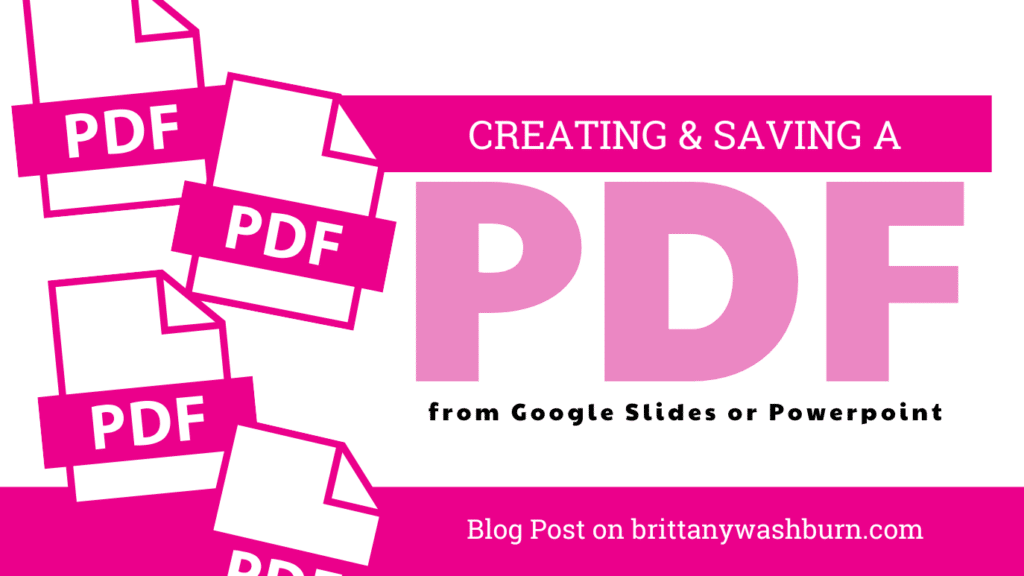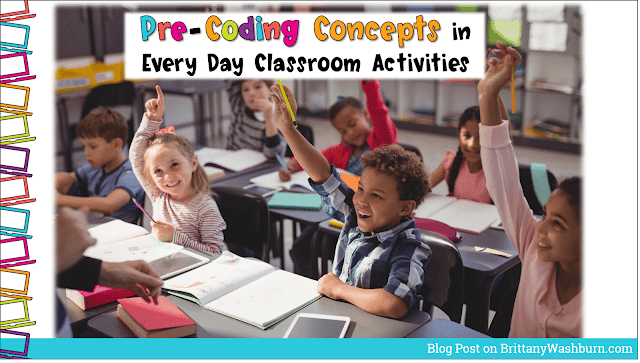How to use PDFs in the Elementary Classroom

Using Portable Document Format (PDF) files has become a popular and practical option for both teachers and students in the classroom. PDF files offer a wide range of benefits, including easy accessibility, reduced costs, and enhanced multimedia capabilities. Whether you are an educator looking to create engaging and interactive materials for your students, or a student in search of a more accessible and convenient way to access course materials, PDFs can offer a powerful solution. In this article, we will explore the various advantages of using PDFs in the elementary classroom, as well as best practices for creating, sharing, and distributing PDFs to students.
Introduction to PDFs in the Elementary Classroom
PDFs, or portable document formats, are becoming more and more popular in the classroom. They are digital documents that can be shared and viewed across different devices and platforms. In this article, we’ll explore the benefits of using PDFs for teaching and learning, the tools and software available for creating and editing PDFs, and strategies for incorporating them into lesson plans at the elementary level.
What are PDFs and why are they useful in the classroom?
PDFs are a type of digital document that preserve the original formatting and layout of a file, regardless of the device used to view it. They are useful in the classroom because they can be easily shared and accessed by students and teachers, and can contain a wide range of multimedia elements such as images, videos, and interactive buttons. In addition, PDFs can be used for a variety of classroom tasks, from distributing reading materials to creating assignments and assessments.
Benefits of Using PDFs for Teaching and Learning
Improved accessibility and usability for students with different learning needs
PDFs can be made accessible by using features such as alt text for images, headings, and descriptive hyperlinks. In addition, they can be easily resized, zoomed in, and navigated using assistive technologies. This makes PDFs an excellent choice for classrooms with students who have different learning needs.
Reduced costs and environmental impact compared to traditional paper-based materials
Using PDFs in the classroom can save on printing and paper costs, and reduce the environmental impact of using paper-based materials. Teachers can also save time by not having to create or copy worksheets or handouts for each student.
Enhanced multimedia capabilities to engage and motivate students
PDFs can contain a wide range of multimedia elements, such as videos, images, and interactive buttons. This can engage and motivate students in ways that traditional paper-based materials cannot. Teachers can create interactive PDFs that allow students to click on images or text to reveal additional information or complete activities.
Tools and Software for Creating and Editing PDFs
Overview of popular PDF creation and editing tools
There are many tools and software available for creating and editing PDFs, such as Adobe Acrobat, Foxit PhantomPDF, and Nitro Pro. Each tool has its own unique features and capabilities.
Comparison of free vs. paid software options
While paid software typically offers more advanced features, there are also free options such as LibreOffice and PDFsam Basic that can be used to create and edit PDFs.
Best practices for creating and formatting PDFs for classroom use
When creating PDFs for classroom use, it’s important to follow best practices such as using clear and concise language, using headings and subheadings, and providing alt text for images. Teachers should also consider the file size of the PDF to ensure it can be easily shared and accessed by students.
Strategies for Incorporating PDFs into Lesson Plans
Examples of PDF activities and assignments across subject areas
PDFs can be used for a variety of classroom tasks such as reading materials, worksheets, quizzes, and assessments. For example, students can be given a PDF worksheet that they can complete and submit electronically.
Tips for adapting PDF materials for different grade levels and learning styles
Teachers can adapt PDF materials for different grade levels and learning styles by including different types of multimedia elements or providing alternative formats such as audio or video. They can also provide different levels of scaffolding and support for students who may need it.
Integration with other classroom technologies and tools
PDFs can be integrated with other classroom technologies and tools, such as learning management systems, interactive whiteboards, and online assessment tools. This can create a more seamless and integrated learning experience for students.
Best Practices for Sharing and Distributing PDFs to Students
PDFs are a versatile and commonly used format for sharing digital documents and resources in the classroom. But with so many options for sharing and distributing PDFs, it can be overwhelming to decide on the best method for your students. Here are some best practices for sharing and distributing PDFs to students:
Secure and reliable methods for sharing PDFs with students and parents
It is important to use a secure and reliable method for sharing PDFs with students and parents. Some popular options include password-protected links or shared folders through cloud-based services such as Google Drive or Dropbox.
Effective use of digital platforms and tools for distributing PDFs
Digital platforms like learning management systems or educational apps can be effective tools for distributing PDFs to students. You can also use tools like Kami or Adobe Acrobat to annotate and mark up PDFs, creating a more interactive experience for students.
Strategies for organizing and storing PDF materials for easy access and retrieval
Make sure to organize and store PDF materials in a way that is easily accessible and retrievable for both yourself and your students. This can be as simple as creating a system for naming and tagging files or using folders to group related materials.
Tips for Enhancing Student Engagement and Interaction with PDFs
PDFs can be much more than static documents. Here are some tips for enhancing student engagement and interaction with PDFs:
Using multimedia elements and interactive features within PDFs
PDFs can include multimedia elements and interactive features such as videos, audio recordings, and hyperlinks. These features can help to engage students and make the material more interactive and dynamic.
Encouraging collaboration and peer feedback using PDF materials
PDFs can be an effective tool for collaboration and peer feedback. For example, students can use tools like comment or annotation features to provide feedback on each other’s work or engage in collaborative projects.
Incorporating PDFs into project-based learning and inquiry-based activities
PDFs can be a valuable resource in project-based learning and inquiry-based activities. Teachers can provide students with PDFs that contain relevant information and resources, allowing them to explore and engage in self-directed learning.
Addressing Common Challenges and Limitations When Using PDFs
Despite the many benefits of using PDFs in the classroom, there are some common challenges and limitations that should be addressed:
Compatibility issues with different devices and software platforms
PDFs can sometimes present compatibility issues, particularly when using different devices or software platforms. Make sure to test your PDFs across different devices and platforms to ensure compatibility.
Accessibility and usability concerns for students with disabilities
PDFs may present usability and accessibility challenges for students with disabilities. Consider using alternative formats or providing accommodations to ensure that all students can access and engage with the material.
Technological challenges and troubleshooting tips for common issues
Finally, be prepared to troubleshoot common technological challenges that may arise when using PDFs in the classroom. Some common issues include slow loading times, difficulty annotating or marking up PDFs, or compatibility issues with specific devices or software platforms.
Conclusion and Future Applications of PDFs in the Elementary Classroom
PDFs are a flexible and powerful tool that can be used in a variety of ways to support student learning and engagement. By using best practices for sharing and distributing PDFs, enhancing student engagement and interaction, and addressing common challenges and limitations, educators can take full advantage of the benefits that PDFs offer. As PDF technology continues to evolve, educators can look forward to even more innovative and effective ways to incorporate PDFs into the elementary classroom.
In conclusion, PDFs offer many benefits for elementary educators and students alike. By leveraging the power of digital tools and technologies, teachers can create engaging, multimedia-rich materials that support student learning and success. By following best practices for creating, sharing, and distributing PDFs, educators can ensure that their materials are accessible, convenient, and effective. As we look to the future of education, it is clear that PDFs will continue to play an important role in supporting student achievement and enhancing the classroom experience.

FAQs
Can I use PDFs on any device?
Yes, PDFs can be opened and viewed on any device that has a PDF reader installed. There are many free PDF reader applications available for Windows, Mac, iOS, and Android devices.
What are some best practices for creating and formatting PDFs for classroom use?
Some best practices for creating and formatting PDFs for classroom use include optimizing files for smaller sizes, using clear and legible fonts, and including multimedia elements like images and videos to enhance engagement and comprehension. Additionally, it is important to ensure that PDFs are accessible to all students, including those with disabilities, by using alternative text and other accommodations.
How can I share PDFs with my students securely?
There are several ways to securely share PDFs with your students, including using a secure file-sharing platform like Dropbox or Google Drive, password-protecting your PDF files, or using a virtual learning management system (LMS) that offers secure access for students and teachers.
Are there any downsides to using PDFs in the classroom?
While PDFs offer many benefits for classroom use, there are some potential downsides to consider. One potential challenge is compatibility issues with different devices and software platforms. Additionally, some students may struggle with reading and comprehending materials on a screen, which could impact their learning experience. It is important to consider these factors when using PDFs in the classroom and to be mindful of the unique needs of each student.

Check out some other Tech Tips blog posts:
Effective Email Management for Teachers: Organizing, Filtering, and Staying On Top of Messages
Effective email management is crucial for teachers to stay organized, communicate effectively, and keep track…
How to Convert PowerPoint Presentations to Google Slides (and Why You Should)
Teachers often create resources in PowerPoint, but as more schools adopt Google Workspace, it’s becoming…
Basic Troubleshooting Tips for Common Technology Issues in the Classroom
With the integration of technology in the classroom comes a myriad of potential issues that…
Essential Keyboard Shortcuts Every New Teacher Should Know
Keyboard shortcuts are a great way to save time and effort, something every teacher desperately…
Creating and Saving a PDF from Google Slides or PowerPoint
Creating a Google Slides or PowerPoint presentation and saving it as a PDF is easier…












